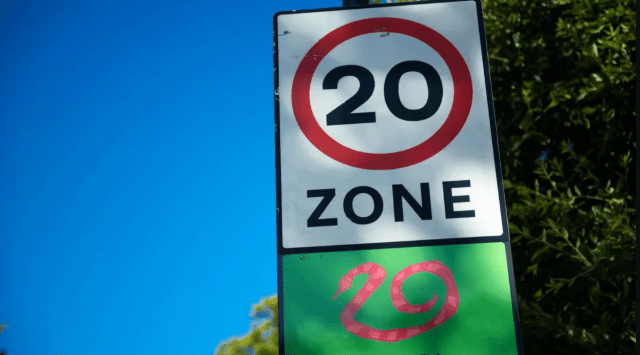A major review commissioned by Transport for London (TfL) has revealed that the rollout of 20mph speed limits across the capital has played a key role in cutting road fatalities and serious injuries.
According to the findings, fatal or serious casualties on borough-managed roads dropped by 34% following the implementation of these lower speed limits. While the study notes that other factors may have contributed to a 15% decline, the overall reduction strongly points to the success of slower speed schemes in improving road safety.
Decades of Data Show Clear Benefits
The extensive report analysed 157 separate 20mph schemes introduced between 1989 and 2013. It’s the first study of this scale in London and considers a three-year window before and after each scheme to assess the longer-term impact.
The report uncovered some striking results:
- Collisions fell by 35%, from 2,560 incidents to 1,715
- Road deaths reduced, from 15 to nine
- Child fatalities dropped significantly, from four to one
- No change observed in motorcycle-related fatalities
TfL acknowledged that the 20mph zones were not the only factor responsible for these improvements, but insisted they were a major contributing force.
London’s Walking and Cycling Commissioner, Will Norman, said the findings leave little room for doubt.
“The new analysis is compelling and shows clearly that lowering speeds is saving lives. Every death or serious injury on our roads is one too many.”
Norman stressed that slower speeds not only protect vulnerable road users but also foster safer, more liveable communities.
“They help create safer, more welcoming streets, and are a vital part of building a safer London for everyone.”
Despite the positive statistics, not everyone supports the expansion of 20mph zones. Critics argue the policy may do more harm than good, particularly for businesses and tradespeople.
Callum McGoldrick, from the TaxPayers’ Alliance, voiced his concern over the broad-brush approach.
“Slowing down traffic across entire areas can clog up roads, delay journeys and hit productivity, especially for tradespeople and small businesses. Rather than heavy-handed restrictions, councils and TfL should focus on targeted measures at accident blackspots, not treating every motorist like a menace.”
His comments echo those made last year by the Licensed Taxi Drivers’ Association, who called the widening of 20mph zones “devastating” for black cab drivers working in central London.
Half of London’s Roads Already at 20mph
While TfL directly controls just 5% of roads in the capital, more than half of London’s boroughs have now adopted the 20mph policy. The speed limit was formally introduced across the central London Congestion Charging Zone in March 2020.
BBC London’s Transport Correspondent, Tom Edwards, believes this is just the beginning. “Already about half of London’s roads are 20mph and City Hall are preparing the ground for more on the basis that it saves lives. That fits with the mayor’s Vision Zero policy to get road casualties to zero.”
Vision Zero is the Mayor’s strategy to eliminate all deaths and serious injuries from London’s roads by 2041.
The debate around 20mph zones is far from over. Supporters argue they’re a proven measure to make streets safer. Opponents say they come at a cost—slower commutes, reduced economic efficiency, and driver frustration.
But with clear evidence that fewer lives are being lost and serious injuries are falling, London appears set to push ahead with its commitment to safer streets—one slower mile at a time.






